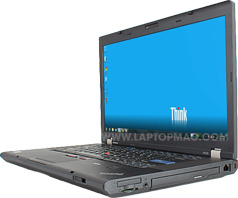Help Me, LAPTOP: Finding the Perfect Laptop for Graphics Programming
Sometimes you don't just want to play the latest games, you want to create them as well. Such is the case with David, who recently wrote us with the following question:
I'm searching for a laptop for 2D and 3D graphics programming. I need something with OpenGL 4.0 support and a fast enough processor and enough RAM to run 3D animations and games. Battery life isn't of the utmost importance and weight isn't a huge issue but it would be nice to have a decent battery. Something that looks good would be appreciated but isn't necessary. What do you recommend?
Unfortunately, this question is not necessarily as straightforward as it may seem, as the type of laptop David needs may depend on the type of graphics programming he's going to do. Creating lower-resolution 2D and 3D graphics can be done on a laptop featuring a dedicated graphics card, but professional quality graphics for movies or video games may require a workstation with Nvidia Quadro graphics. Which is right for David and other graphics programmers? Let's explore a few options.
If you're looking to make 3D models with a lower polygon count (for instance, when making mods for PC games), you should be able to use a notebook with a dedicated GPU. A lot of graphics programmers use the MacBook Pro 15-inch, and with good reason: the laptop features plenty of computing power (a 2nd-Generation Intel Core i7 CPU, 4GB of RAM and a 750GB, 5,400-rpm hard drive) as well as a 1GB AMD GPU.
On 3DMark06, a synthetic benchmark that measures overall graphics performance, the MacBook Pro more than doubled the average with a score of 10,359. Similarly, games run at a brisk pace on the notebook. When running "World of Warcraft" on the highest settings, the MacBook Pro cranked out 43 frames per second, well above the category average of 27 fps. The notebook's display maxes out at 1440 x 900, unfortunately, which isn't as crisp as on other 15-inch notebooks in its price range.
Of course, we would be remiss not to mention the HP Envy 15, the MacBook Pro's Windows-based doppelganger. The Envy 15 boasts a 2nd-Generation Intel Core i5 CPU, 6GB of RAM, 500GB 7,200-rpm hard drive and 1GB AMD GPU -- more than enough processing power to handle basic 3D graphics programming and play the latest games. The Envy 15 scored almost as well as the MacBook Pro on 3DMark06, turning in a score of 8,978, and, in "World of Warcraft," notched 43 frames per second at a resolution of 1920 x 1080 and the graphics on autodetect.
Sign up to receive The Snapshot, a free special dispatch from Laptop Mag, in your inbox.
For anyone interested in creating movie-quality 3D graphics, however, a more specialized GPU will probably be required. Enter the Lenovo ThinkPad W520, a mobile workstation designed to do heavy-duty processing. Featuring a 2nd-Generation Intel Core i7 CPU, Nvidia Quadro 2000M graphics card and 8GB of RAM, the W520 could handle just about any graphically-intensive task we threw at it.
[The Best & Worst Laptop Brands]
On 3DMark06, the W520 scored a whopping 11,683, and in "World of Warcraft" -- with native resolution and graphics set on autodetect -- the notebook notched 127 frames per second. Perhaps more importantly for professional graphics programmers, the Nvidia Quadro 2000M GPU on the ThinkPad W520 has been designed specifically for CAD (Computer-Aided Design) applications such as AutoCAD, which comes with its own set of Quadro drivers. Of course, the W520's successor, the W530, which has an Ivy Bridge CPU and even newer Nvidia Quadro K2000M graphics, will most likely be even more powerful.
If you have a question about fixing a technical problem or buying a new product, drop us a line and we’ll respond to the most interesting questions in this section.
David was a writer at Laptop Mag. His coverage spanned how-to guides, reviews, and product rankings. He reviewed Asus, Lenovo, and Gigabyte laptops; guided readers on how to do various things in Excel, and even how to force quit an app in macOS. Outside of Laptop Mag, his work has appeared on sites such as Tom's Guide and TechRadar.


